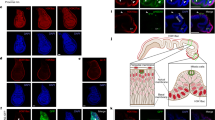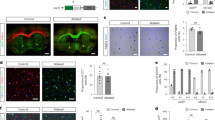Abstract
3-AcETYLPYRiDiNE (3-AP) and 6-aminonicotinamide have a teratogenic effect on the development of the chick limb but have no effect of coadministered with nicotinamide1. This has led Caplan to the hypothesis that nicotinamide has a crucial role in the spatial organisation of muscle and cartilage in the developing limb, high levels of nicotinamide specifying muscle, and low levels cartilage; with even the possibility that a metabolic gradient related to the blood supply could provide the positional information specifying the pattern of muscle and cartilage2–5. The evidence for this hypothesis is based both on in vivo and in vitro studies, the latter claiming to show that 3-AP enhances chondrogenesis and inhibits myogenesis in cultured limb mesenchyme cells. As regards the in vivo effects, it is suggested that the gross muscle hypoplasia observed might be accounted for in terms of 3-AP switching the differentiation of mesenchyme cells from a myogenic fate to a chondrogenic one. This seemed to us to be an unlikely explanation, since the chondrogenic and myogenic tissues are already physically separated at stages when 3-AP is still known to have an effect (as late as 13d of incubation). It seemed much more likely that 3-AP was affecting muscle growth rather than its differentiation. We therefore made a histological study of the effect of 3-AP, and found that it was a potent destroyer of the peripheral nerves, and that there is no evidence to support the view that it affects mesenchyme differentiation.
This is a preview of subscription content, access via your institution
Access options
Subscribe to this journal
Receive 51 print issues and online access
$199.00 per year
only $3.90 per issue
Buy this article
- Purchase on Springer Link
- Instant access to full article PDF
Prices may be subject to local taxes which are calculated during checkout
Similar content being viewed by others
References
Landauer, W., J. exp. Zool., 136, 509–530 (1957).
Caplan, A., Expl Cell Res., 62, 341–355 (1970).
Caplan, A., J. exp. Zool., 178, 351–357 (1971).
Caplan, A., J. exp. Zool., 180, 351–362 (1972).
Caplan, A., and Koutroupas, J., J. embryol. exp. Morph., 29, 571–583 (1973).
Tanaka, S., Yamamoto, Y., and Hayashi, Y., Embryologia, 9, 306–333 (1967).
Barnes, J. M., in The Scientific Basis of Medicine Annual Reviews 1969, ch. 11, 183–201 (Athlone, London, 1969).
Eastlick, H. L., J. exp. Zool., 92, 27–49 (1943).
Hamburger, V., Wilhelm Roux Arch. Entw. Mech. Org., 114, 272–363 (1928).
Author information
Authors and Affiliations
Rights and permissions
About this article
Cite this article
MCLACHLAN, J., BATEMAN, M. & WOLPERT, L. Effect of 3-acetylpyridine on tissue differentiation of the embryonic chick limb. Nature 264, 267–269 (1976). https://doi.org/10.1038/264267a0
Received:
Accepted:
Issue Date:
DOI: https://doi.org/10.1038/264267a0
This article is cited by
-
ADP-ribosyl transferase, rearrangement of DNA, and cell differentiation
Bioscience Reports (1983)
Comments
By submitting a comment you agree to abide by our Terms and Community Guidelines. If you find something abusive or that does not comply with our terms or guidelines please flag it as inappropriate.



